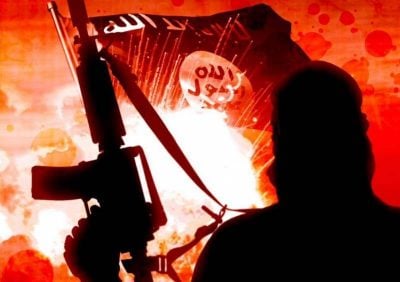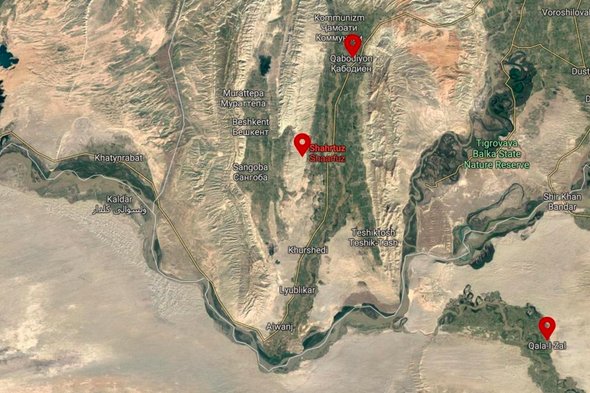Did the US-funded Afghan Border Outpost Help Tajikistan in Neutralizing ISIS Terrorists?

On November 6th, early in the morning at 7:50 AM local time, the Interior Ministry of the Republic of Tajikistan published a statement about an attack on a Tajik border outpost in “Ishqobod” along the border with Uzbekistan. The first statement informed that 15 of the assailants and 2 members of the state forces have died. On the same day, in the second statement -that of the State Committee on National Security (SCNS)- claimed that the invaders were members of ISIS and entered the country from Afghanistan. After 2 days, on November 8th, ISIS officially took the responsibility of the attack by publishing a statement on its Amaq news agency.
Due to the contradictions, there were also ambiguities about the claims of both ISIS and Tajik state. Edward Lemon, a Central Asian researcher and assistant professor at Daniel Morgan Graduate School tweeted the same day:
“This needs to be treated with caution and could just be opportunism on the part of ISIS”.
At the same time, different scenarios of organizing the attack by the role of “Internal” and even “external” players rose up.
However, the scenario that was never addressed, even in rumors, was the possible role the United States played in intercepting the attackers. Tajikistan claims that the fighters entered its southern district of Qabodiyon from Qalay-I-Zalin Afghanistan. This is while the US had constructed a border outpost in this area.
In the first week of this month, a border outpost in Okultun constructed with US funding was inaugurated. The outpost constructed on the Tajikistan-Afghanistan border, aims to increase the capacity to monitor and patrol the border in the Shahritus region of Khatlon province. It seems to significantly increase the Tajikistan Border Forces’ ability to monitor and interdict illegal border crossings across a 15-20 kilometer range, and counter transnational threats such as marco-traffickers, smugglers, and violent extremists.
If one looks at the map and studies the topography, it seems likely that the fighters might not have crossed over the mountains east of Shahrituz and instead passed over the western part named Teshiktosh. As such, given its locations on the way from Qala-Zal to Qabodiyon and the difficult topography of the region, if one passes through other routes, it is likely that this outpost observed some activity. This intel might have led to the Tajikistan forces intercepting and neutralizing the ISIS terrorists. In other words, the US funded outpost might have helped the Tajik forces in intercepting the ISIS assailants.
The position of Qala-Zal, Shahrtuz and Qabodiyon and the Topography of Region
Some commentators have questioned the version of the Tajik state and some reports have claimed that Tajikistan is trying to play down its casualty figures.
Kunduz Provincial Police told the authors that there are some reports of foreign fighters there. Recently somewere arrested, including Pakistanis, but they denied saying they crossed over to Uzbekistan. Attempts to reach the Afghan Ministry of Interior for comments went unanswered. It is worth noting , here, that ISIS threats from Afghanistan are downplayed by both Afghanistan and the US Resolute Support mission in Afghanistan & hyped up by Tajikistan and Russia. Here something altogether different happened.
The Russians behavior and reaction is also interesting. Just half an hour before the Tajikistan Interior ministry released its statement, Sputnik published a report claimed that the number of ISIS members in north Afghanistan has increased and they cooperate with the Taliban. And more interestingly, a week before the incident on October 30th, the chairman of Russian Security Council, Nikolai Patrushev visited Tajikistan and met President Rahmon. A key issue discussed was the necessity of collective measures toward the threats from Afghanistan. This is while Tajikistan is a member of Russian led Collective Security Treaty Organization (CSTO) and hosting the biggest Russian military base abroad. It seems that Patrushev’s emphasis on “collective measures” could have other meanings.
After the attack, everyone expected a supportive position from Russia on Tajikistan’s claim of an ISIS attack and calling for the necessity of more security integration with Russia. But the well-known Russian newspaper Kommersant, which is considered close to the government, published a report in which an expert named Arkadia Dubnova, claimed the attack is a dummy and assailants might be prisoners brought and killed there by the government. Some other Russian opinions have such pessimism inside. It might be due to a US intervention on Russian “Near Abroad”.
On the other hand, as Muqtedar Khan believes,
“the Trump administration’s National Security Strategy document views Central Asia as an adjunct to South Asia. The United States is still looking at the region through two security-related lenses. One lens is that of counterterrorism and the stabilization of Afghanistan; the other is the global competition with China. But counterterrorism remains the dominant interest. As the threat and reach of ISIS, al Qaeda and the Taliban diminish, so will American influence in Central Asia if Washington doesn’t broaden its view of the region”.
So, the possible involvement can make sense, especially when Rahmon needs new powerful allies for balancing Russia and China before shifting power to his elder son, Rustam.
*
Note to readers: please click the share buttons above or below. Forward this article to your email lists. Crosspost on your blog site, internet forums. etc.
Omid Rahimi is a Fellow at the Institute for Central Asia and Afghanistan Studies in Mashhad, Iran. Follow him at @0midRahimi.
Aveek Sen is an independent journalist working on cybersecurity and the geopolitics of India’s neighborhood, focusing on Pakistan, Afghanistan, Iran, and Bangladesh.. Follow him at@aveeksen.


